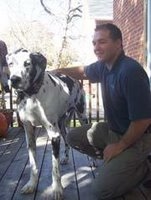 When used by Chiropractors, the term subluxation is used to describe a very specific condition of the spinal column in which one or more of the joints have lost their proper alignment or motion.
When used by Chiropractors, the term subluxation is used to describe a very specific condition of the spinal column in which one or more of the joints have lost their proper alignment or motion.
Subluxations can cause a variety of symptoms from no symptoms to very severe symptoms. The most common of which is PAIN. Dogs in pain will compensate in gait or posture and often refuse to perform certain tasks. The following is a list of symptoms that may indicate pain from the presence of subluxation:
-
Puppy” sitting, or sitting with the rear legs off to one side.
-
Discomfort when putting on or taking off collars and harnesses.
-
Abnormal posture when standing.
-
Evasion type maneuvers such as dipping head or hollowing back.
-
Wringing or tucking tail.
-
Refusing or unwillingness to go over jumps.
-
Change in behaviour patterns; fear biting.
-
Sensitivity to touch.
- Facial expression of apprehension or pain.
Subluxations can also cause change in muscle coordination and flexibility. These conditions may cause:
- Lack of coordination in gaits.
- Pacing.
- “Lameness” that seems to move from limb to limb.
- Stiffness.
- Stiffness in side movement of the body or neck.
- Muscle atrophy or shrinking.
- Shortened stride in one or two limbs.
- Decreased extension in front or rear.
- Side winding or crabbing.
- Stumbling on dog walk.
- Partial weakness or paralysis.